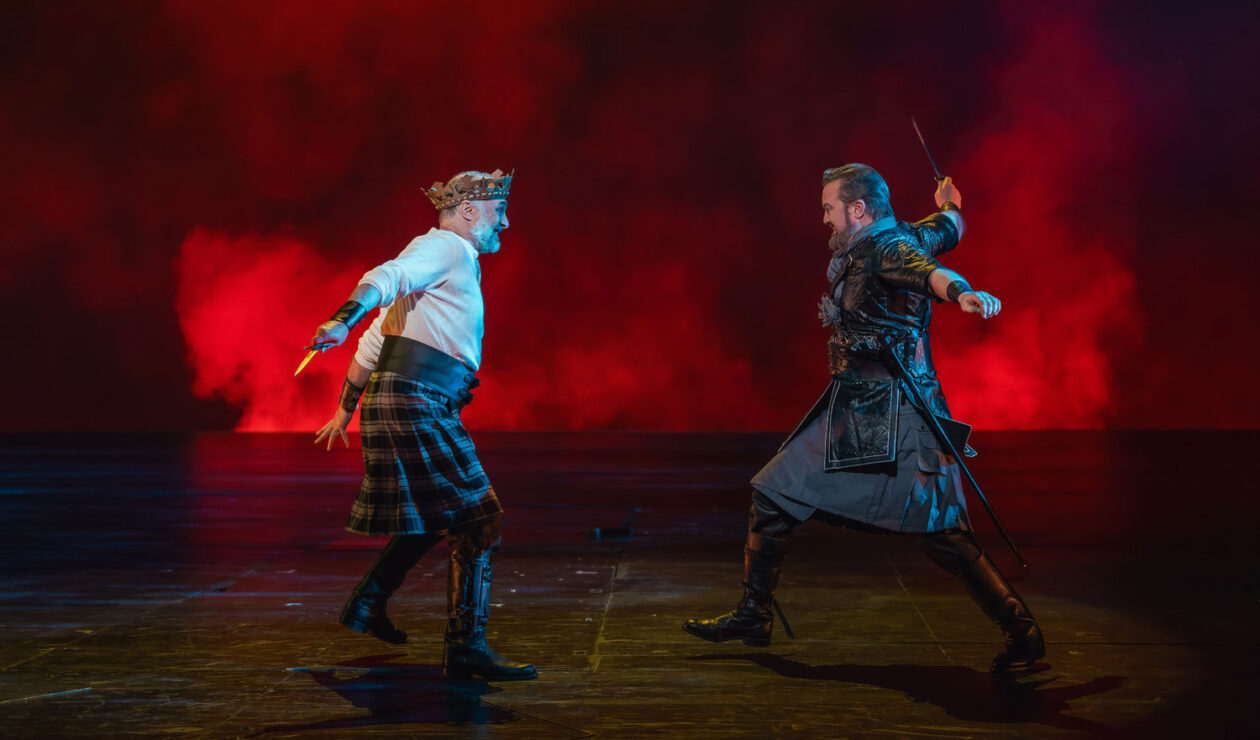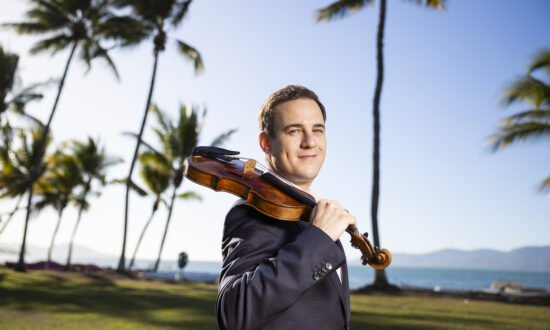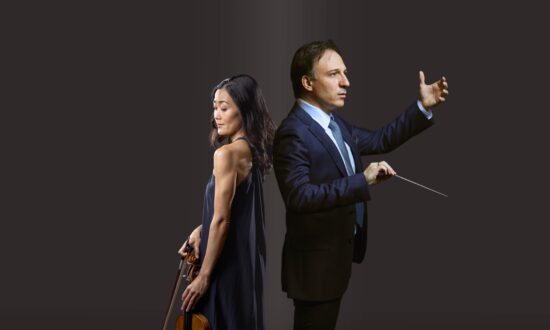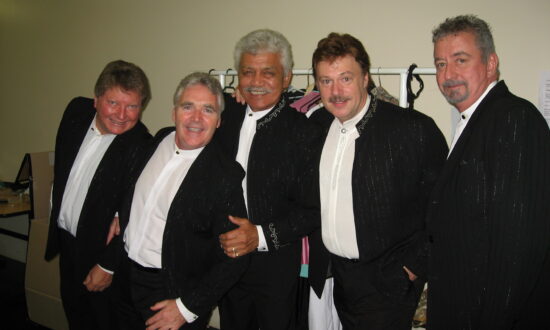Director Stuart Maunder, who masterminded this performance of Verdi’s Macbeth, is a consummate force in the world of theatre. This production is something of a farewell, with the outgoing State Opera artistic director set to take up a similar position with the Victorian Opera in October.
The opening is enchanting: wood instruments and shrieking flutes talking to each other, as if they were voices running through the woods, setting the scene for the on-stage dark mischief, all conducted by Finnigan Downie Dear who did a thoroughly excellent job throughout the performance. Verdi’s score comes up vividly in the performance, heightening the drama as is fitting to the tragic opera.
The simple but imaginative and evocative use of space is thanks to the set and lighting designers Roger Kirk and Trudy Dalgleish. The set consists of large movable pillars on a raked stage with metres of flowing white linen, complemented by the lighting and smoke effects to create different scenes – from woods and castles, to banquet halls, boudoirs and dark corners for plotting murders. It is a clever technique as it doesn’t interfere with the telling of the story: indeed, it offers the audience members a sense of what is to come and allows them to join the dots, as it were. For a relatively low-budget production, the staging is an effective and versatile solution.
The State Opera Chorus look and sound sharp and focused. Chorus master Anthony Hunt did a fabulous job with the ensemble, who were excellent, not only musically but also in terms of characterisation. You could almost feel their internal dialogue.
The first half of Verdi’s Macbeth lacked pace. I also felt there was a lack of connection or reflection on the witches and what they were prophesying to Macbeth and Banquo. I wanted to feel the journey along with Macbeth, but you couldn’t quite read him emotionally. It is no reflection on the musical ability of the singer who played Macbeth, Argentine–Australian baritone Jose Carbo: his delivery is excellent in an operatic sense, but I felt the acting side and emotional responses were somewhat lacking.
Bass Pelham Andrews, as Banquo, gives a fitting performance of his stable and noble character. Kate Ladner, in the important role of Lady Macbeth, is outstanding, showing character development and emotional range throughout her performance, as does tenor Paul O’Neil, who gives an emotional and expressive performance as MacDuff.
The witches could have gone deeper into their characters: I wanted a more conspiratorial feeling to their call to the powers of hell. The vocal performances are good and the costumes – black nun habits with necklaces of bone – are effective.
The second half pace picks up and the performance is much more focused.
The Shakespearean tale of Macbeth is one of a gruesome murderous couple hell-bent on power, ultimately seeking the throne. However, it didn’t always feel like that. The opera can’t just be about relying on great singing: as an audience, we must feel the journey and the internal dialogue in which Macbeth and Lady Macbeth embark on.
I wanted to get a real sense of the emotional unravelling of Macbeth. Fortunately, Lady Macbeth is much easier to read. Her on-stage character shows all the elements of her disturbing journey, from the beginning to her final aria, giving the audience what they want – and that is to empathise, to look inside her soul as a human being, for better or for worse.

Get InReview in your inbox – free each Saturday. Local arts and culture – covered.
Thanks for signing up to the InReview newsletter.
All in all, Stuart Maunder has produced a fine version Verdi’s show with a well-chosen cast and extremely solid ensemble. It’s an emotionally-draining but must-see night at the theatre.
Macbeth is playing at Her Majesty’s Theatre until September 16.
Support local arts journalism
Your support will help us continue the important work of InReview in publishing free professional journalism that celebrates, interrogates and amplifies arts and culture in South Australia.
Donate Here




